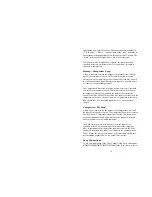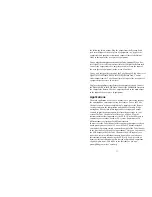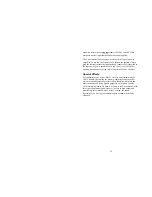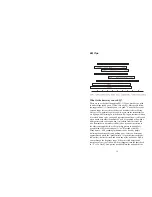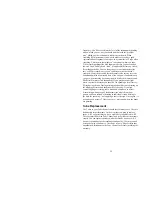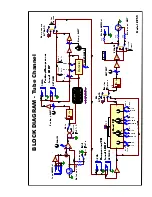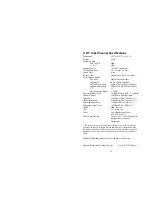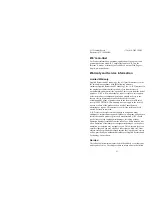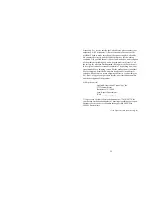
9
When setting up the preamp circuit, start with the Preamp Output at
its “0” level. Once you get the Gain control set the way you want it to
sound, use the Preamp Output control to set the level out of the
preamp circuit (much like using the master volume control on a guitar
amplifier). Use the Preamp Output control to add more gain when you
have the Gain control set low for a “clean” sound. Likewise, you can
use the Preamp Output control to decrease the level out of the preamp
circuit when you’re cranking the Gain control up for maximum tube
warmth.
Optical Compressor Circuit
Slope Switch
The Slope Switch selects the compression ratio for the compressor
circuit. In its “out” position, the compression ratio is an active 2.3:1.
This means that for every 2.3dB over the threshold the input signal
rises, the compressor’s output will change by 1dB. This is a very mild
and musical compression ratio, which is ideal for smoothing all types
of signals.In its “in” position, the compression ratio is greater than
6:1. This is typically called “soft limiting” as it allows only a 1dB
change in signal level for any signal reaching over 6dB of the set
threshold. This setting is ideal for applications where exceeding a set
level is not desirable (i.e., mixing, popping bass, digital recording,
etc.).
Speed Switch
The position of the Speed switch selects the release characteristics of
the compressor circuit. The “out” (“fast”) position allows the
compressor to recover quickly once the signal falls below the
threshold. The “in” (“auto”) position allows the compressor to adjust
itself depending on the characteristics of the input signal. Use the
“fast” setting when the signal has repetitive, consistent characteristics
(kick drum, snare, vocals, etc.). Use the “auto” setting when the signal
has varying characteristics (long decaying notes alternating with quick
notes, mix material, etc.).
Compressor Bypass Switch
A Bypass switch is included on the compressor circuit to enable you to
remove the compressor from the signal chain. When set to its “in”

















